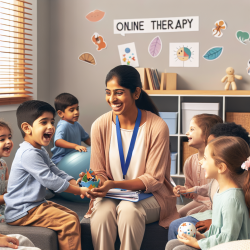As a practitioner in the field of speech-language pathology, staying abreast of the latest research is crucial for providing the best outcomes for children. One significant study, "Characterising the Long-Term Language Impairments of Children Following Cerebellar Tumour Surgery by Extracting Psycholinguistic Properties from Spontaneous Language," offers valuable insights into the long-term language impairments observed in children post-cerebellar tumor surgery. This blog aims to help you integrate these findings into your practice to enhance language rehabilitation for these children.
Understanding the Study
The study analyzed the spontaneous language of twelve children who underwent cerebellar tumor surgery. By examining psycholinguistic properties across four linguistic levels—semantic, lexical, phonological, and morphosyntactic—the researchers aimed to identify specific language processing deficits.
Key Findings
- Semantic Impairments: Five out of twelve children showed semantic processing impairments, particularly in the production of nouns and verbs.
- Lexical Deficits: Three children exhibited difficulties with lexical properties such as age of acquisition and word frequency.
- Morphosyntactic Challenges: Six children faced morphosyntactic impairments, affecting grammatical accuracy and sentence complexity.
- Phonological Issues: Five children had phonological deficits, indicated by a tendency to produce shorter words.
Implementing Findings in Practice
Given the heterogeneity in language outcomes, individualized and comprehensive postoperative language assessments are essential. Here are some practical steps to integrate the study's findings into your therapy sessions:
1. Comprehensive Language Assessments
Conduct detailed assessments that include both standard language measures and psycholinguistic variables. This approach will help you identify specific impairments across all linguistic levels.
2. Tailored Intervention Plans
Develop individualized intervention plans based on the specific deficits identified in each child. For example, if a child exhibits semantic impairments, focus on enhancing their ability to produce and understand high-imageability and high-concreteness words.
3. Utilize Spontaneous Language Samples
Incorporate spontaneous language tasks in your assessments and therapy sessions. These tasks provide a more ecologically valid measure of a child's language abilities compared to formal tests.
4. Monitor Progress Regularly
Regularly assess the child's progress and adjust the intervention plan as needed. Given the potential for long-term impairments, ongoing monitoring is crucial for effective rehabilitation.
Encouraging Further Research
The study underscores the need for further research to better understand the long-term language outcomes in children post-cerebellar tumor surgery. By staying informed about the latest research and integrating new findings into your practice, you can contribute to the ongoing improvement of therapeutic approaches for these children.
To read the original research paper, please follow this link: Characterising the Long-Term Language Impairments of Children Following Cerebellar Tumour Surgery by Extracting Psycholinguistic Properties from Spontaneous Language.










